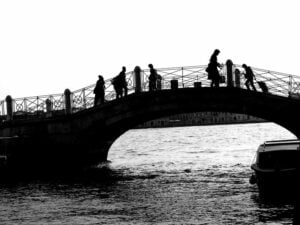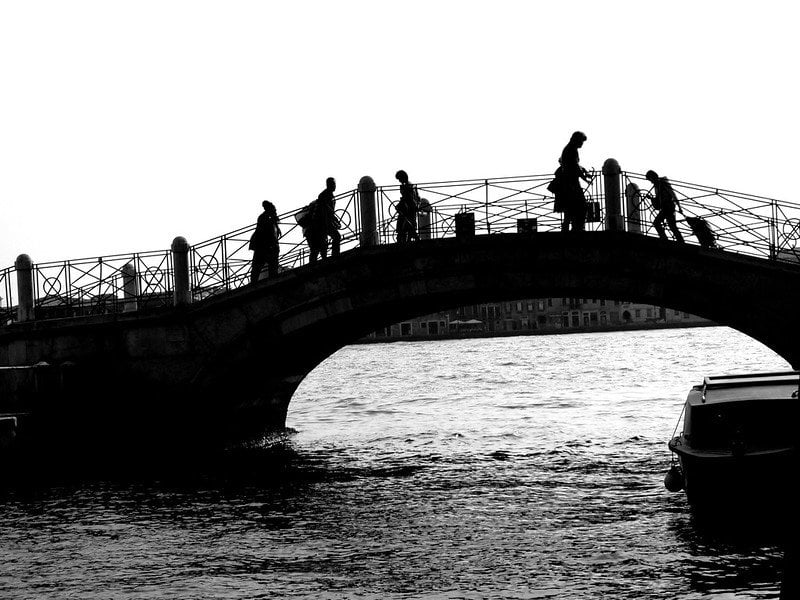
I had a first glimpse of what life was really like in Venice just a few weeks after I moved there. At the time, I was a 19 years old student and I did not even know overtourism was a thing. It hit me when I needed to grab a painkiller for my headache. While I still couldn’t orient myself well in the city, I was living on one of the main streets so finding a pharmacy would not have been difficult. Or so I thought.
Instead, I had to walk around a lot before finding the only pharmacy in the whole neighborhood. At the same time, on a radius of about 100 meters around where I lived, I could spot: 4 souvenir shops selling overpriced carnival masks, 3 tourist trap restaurant, a few people selling selfie sticks and umbrellas, a tourist information center, and a huge mass of people taking pictures of the water and feeding pigeons.
I lived in a large, central, populated street, and finding a pharmacy was a problem. Later on, I realized that this episode was just the tip of the iceberg. When you live and study in Venice, any mundane activity in your day-to-day life is a problem.
The Housing Issue in Venice
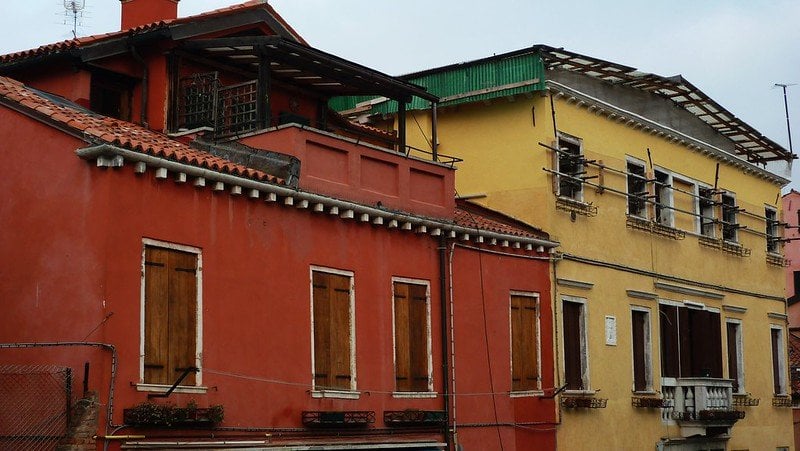
Housing is one of the main issues in Venice. Especially thanks to Airbnb, most people choose to rent to tourists instead of workers or students to make more money. The result? A huge gap between demand and supply for local people needing a flat in Venice. The main consequence is that owners can get away with renting tiny, insalubrious apartments and have them filled anyway.
For example, a flat for 4 students is a usually 50-60 square meters two-bedroom apartment. Finding a room just for yourself is rare and expensive, so in most cases, you will have to share a “stanza doppia” with a complete stranger. In some cases, it goes as far as a “stanza tripla”, with three people sharing the same room. Most living rooms are being repurposed as bedrooms to fit more people. Sometimes they have curtains in place of doors and walls, as that was originally an open space area. A friend of mine lived in a flat with plywood doors only.
In 2019, people would pay 300-350€/month for a bed in a shared room, bills excluded. For owners, this makes up to 1200-1400€/month per apartment. This is incredibly profitable as they do not spend on renovating and they usually own several flats. For comparison, the average salary in the city in 2019 was about 1.500€ per month for an employee.
Overtourism and Airbnb here are hitting hard: not only are they reducing home supply for average people, but they are creating a huge economic and social gap. Those who inherited one or more apartments can live comfortably and those who need to rent, have to put up with run-down and overpriced places.
Trying to Cope with Overtourism
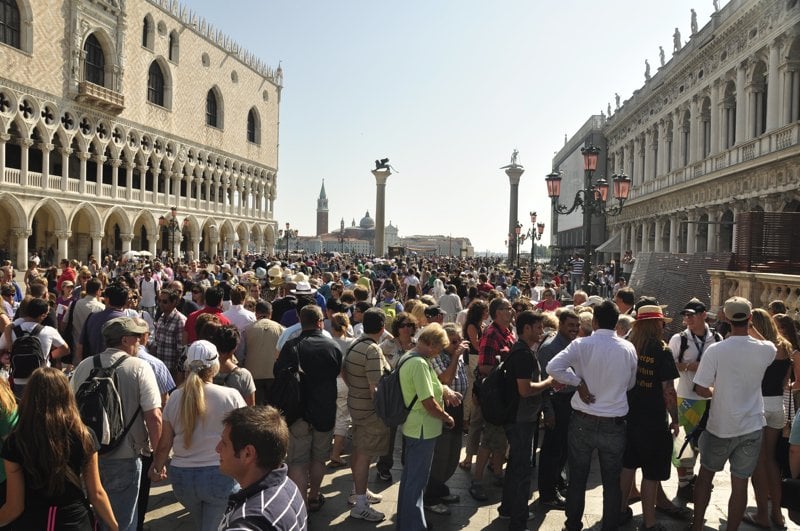
Looking for a solution, many people started renting houses in “terraferma”. That is the mainland cities of Mestre and Marghera facing the island of Venice. This way, they could find flats that were at least compliant with legal standards and more affordable. The 4km long bridge called “Ponte della Libertà” connects the mainland to the Venice Santa Lucia train station. From there you will need to walk or take a boat.
After one year on the island, I chose to move to the mainland too in 2016. The position wasn’t bad and getting to class would take me between 30 and 45 minutes. So, problem solved? No, just replaced with another one: crowds
In 2019 the island of Venice had about 55.000 inhabitants, 280.000 if we consider Mestre and Marghera too. The number of people visiting the city in that year was more than 5 million. Obviously, the island infrastructures are not designed to handle such numbers. In high season, tourists fill up public transportations to a point locals cannot get in and get to work.
During Carnival weeks, students and professors would often get to class 30 or 40 minutes later. The reason is they missed 1 or 2 buses or boats because they were too full. Also, they took longer detours to avoid the crowded streets. In the case of “acqua alta”, or high tide, it gets even worse. The city of Venice installs gangways on the main submerged streets, but not on all, and the gangways are narrow. Then, crowds of tourists take up all the place and block traffic, especially as they stop to take pictures or look around.
It goes as far as seeing people hanging around the university libraries or interrupting classes and exams. This is the symptom of an important aspect of overtourism: attitude. People visiting Venice often assume that every public place or building is there for them, and forget that a city is a living organism whose places are there for the benefit of the people that permanently occupy it.
How Do Residents in Venice Feel?
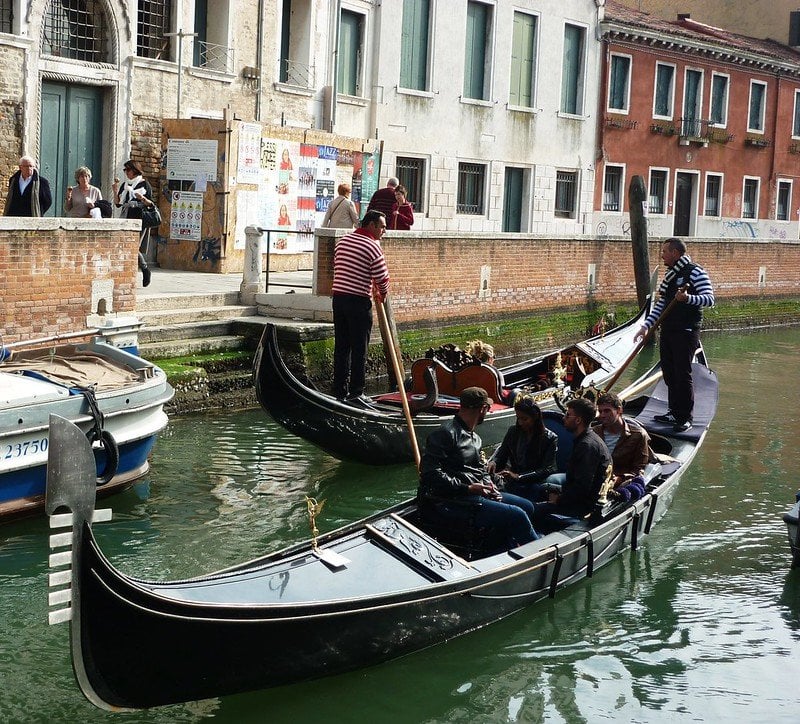
As a result, people in Venice do not like tourists. Locals do not want to mingle with tourists at all and are extremely jealous of their hangout spots and places. The reason for this is that they fear they will become too crowded and too expensive, and they will end up being pushed more and more away from their own neighborhood. Many bars, restaurants, and cafes prefer remaining unknown, and some even refuse to serve you if you do not speak the local dialect.
On the other end, people working in the tourism industry take advantage of tourists as much as they can. With most visitors being on the wealthy side, this is extremely profitable. Inflating prices and scamming is very common in Venice, with some people saying it’s “fair” as tourists “ruined the city”.
Obviously, what is clear is that overtourism created a huge conflict between tourists and locals, making it impossible for the two to have a healthy relationship that benefits both. On the one side, tourists can only see Venice superficially and never really know it. On the other hand, Venetian people’s resentment towards all visitors means they tend to have a very conservative, narrow-minded attitude that does not benefit anybody.
Unfortunately, the government is not of much help. Big travel companies making millions off of tourists are strong lobbies and no decisions are taken to create a more liveable city for everybody. Councilmember Zuin even went as far as suggesting Venice should become an open-air museum for tourists. I find such statements show how overtourism shapes people’s minds to the point they forget a city was made by its inhabitants to suit them, their lifestyle, and their culture. A city exists because its people made it in the past and live it in the present.
Covid-19: An Unexpected Hope?
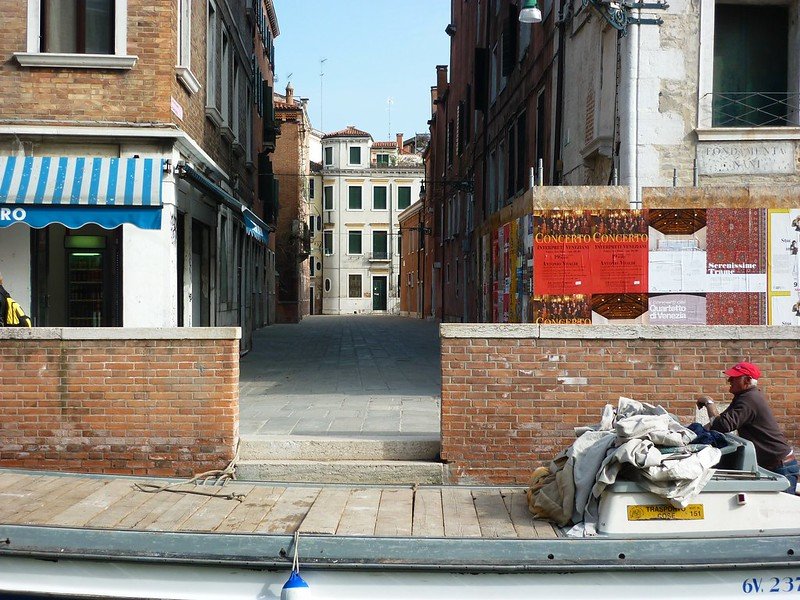
In March 2020, the whole world shut down to respond to the Coronavirus crisis. The impact of travel restrictions on Venice was impressive and unlike any other city in the world. On social media, we all saw pictures of the empty city looking unearthly and disturbing. Eventually, as weeks went by people started talking about the elephant in the room: overtourism.
One thing that was clear for everybody was that after this crisis, things would not have been the same anymore. Travel bans showed that in Venice, once we took tourism away, there was not much left. At the same time, this meant giving the city back to its residents and suddenly solving most issues of living in Venice. Locals had their spaces and their freedom back, and they could use the city places as they were intended.
Right now, the plan is to encourage businesses to turn to residents as much as possible and offer services that can be of use for locals as well, as opposed to becoming touristy hubs. Also, a discussion on the housing problem was open and the government is beginning to think of a strategy to grant a more fair distribution of apartment buildings to locals.
I hope the case of Venice will be an example all over the world. The governments need to remember that they have to make sure their cities are valuable to their citizens as much as they are to their visitors. And as travelers, it is important that we become more responsible in our behavior and choices as tourists.
